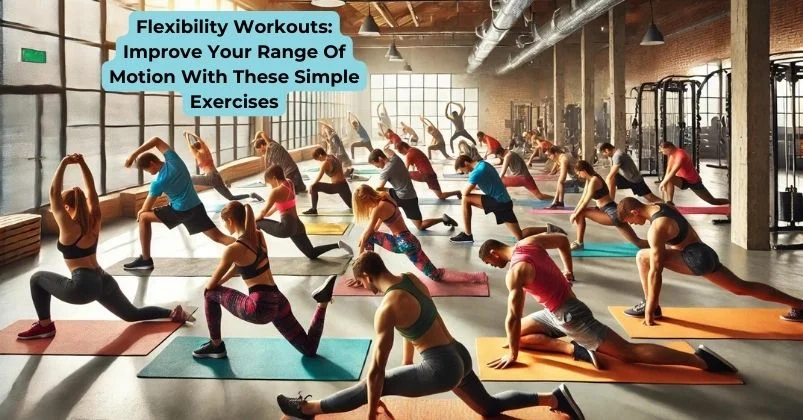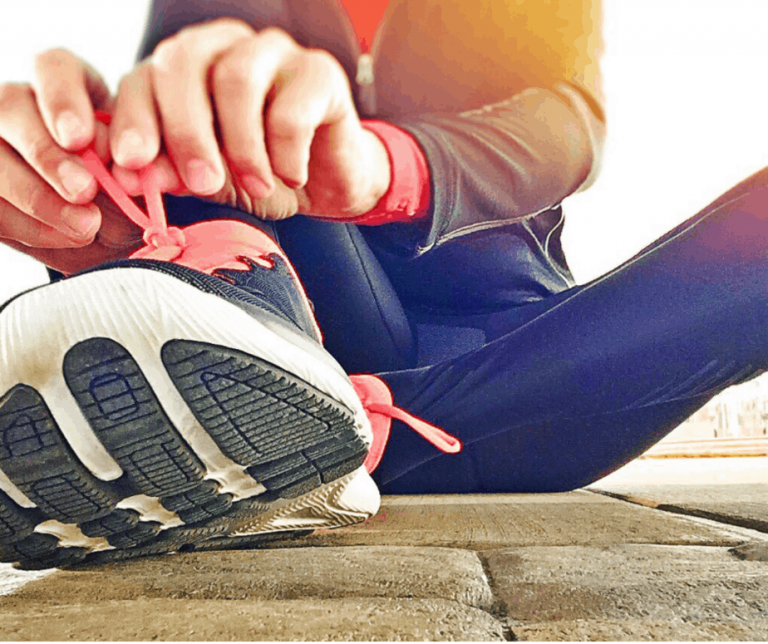Flexibility Workouts: Improve Your Range of Motion with These Simple Exercises
Flexibility workouts are an integral component of any physical activity. They enhance movement capacity, reduce the risk of injuries, and lessen the effects of delayed onset of muscle soreness (DOMS). In this case, flexibility refers to the extent to which muscles and joints can be moved in a given activity. It is useful in everyday life for actions such as bending, reaching, or twisting.
The first step towards integrating flexibility workouts into your exercise routine is understanding what flexibility is and how it affects daily activities. Flexibility exercises may be performed prior to or following a workout session, or even alone. Individual muscle groups may also be focused on for better flexibility through different ranges of stretches. Breathwork is another effective technique to add to your flexibility workouts since it can also increase one’s flexibility while relieving stress at the same time.
Key Takeaways
- Flexibility workouts are important for improving range of motion, preventing injury, and reducing muscle soreness.
- Specific stretches can target different muscle groups for improved flexibility.
- Incorporating breathwork into your flexibility workouts can help improve flexibility and reduce stress.
The Importance of Flexibility In Daily Activities
Flexibility is an essential component of fitness that is often overlooked. It refers to the range of motion of your joints and muscles, and it is crucial for maintaining good posture, balance, and coordination. Flexibility workouts can help you improve your performance in physical activities, decrease your risk of injuries, and enable your muscles to work most effectively. In this section, we will discuss the importance of flexibility in daily activities.
Daily Activities
Flexibility is essential for performing daily activities such as bending, reaching, and lifting. As we age, our muscles and joints become less flexible, making it harder to perform these activities. Flexibility workouts can help you maintain or improve your range of motion, making it easier to perform daily activities with ease and comfort.
Balance
Flexibility is also crucial for maintaining balance. As we age, our balance can deteriorate, making us more prone to falls and injuries. Flexibility workouts can help improve your balance by increasing your range of motion and strengthening your muscles. This can help reduce your risk of falls and injuries, especially in older adults.
Core
Flexibility is also important for maintaining a strong core. Your core muscles are responsible for stabilizing your spine and pelvis, and they play a key role in maintaining good posture. Flexibility workouts that target your core muscles can help improve your posture and reduce your risk of back pain and other injuries.
Endurance
Flexibility is also important for improving endurance. When your muscles are flexible, they can work more effectively, allowing you to perform physical activities for longer periods without getting tired. This can be especially important for athletes and people who engage in regular physical activity.
In conclusion, flexibility is an essential component of fitness that is often overlooked. It is crucial for maintaining good posture, balance, and coordination, and it can help reduce your risk of injuries. Flexibility workouts can be easily incorporated into your daily routine and can help you perform daily activities with ease and comfort.
Flexibility Exercises
Flexibility exercises are essential for improving mobility, preventing injuries, and maintaining good posture. Incorporating a combination of static and dynamic stretching exercises, as well as yoga, can help improve flexibility. Here are some effective flexibility exercises to try:
Static Stretching
Static stretching involves holding a stretch in a comfortable position for a certain amount of time, usually around 30 seconds. This type of stretching can help improve flexibility over time. Some examples of static stretches include:
- Hamstring stretch: Sit on the floor with your legs straight out in front of you. Reach forward and try to touch your toes.
- Quad stretch: Stand with your feet hip-width apart. Lift your left foot up behind you and hold onto your ankle with your left hand. Hold for 30 seconds and then switch sides.
- Shoulder stretch: Stand with your feet hip-width apart. Lift your right arm up and bend it behind your head. Use your left hand to gently pull your right elbow towards your head.
Dynamic Stretching
Dynamic stretching involves moving your body through a range of motion. This type of stretching can help improve flexibility and prepare your body for physical activity. Some examples of dynamic stretches include:
- Walking lunges: Take a step forward with your left foot and lower your body until your left thigh is parallel to the ground. Step forward with your right foot and repeat.
- Leg swings: Stand with your feet hip-width apart. Swing your left leg forward and backward, keeping it straight. Repeat on the other side.
- Arm circles: Stand with your feet hip-width apart. Extend your arms out to the sides and make small circles with your arms.
Yoga
Yoga is a great way to improve flexibility, balance, and strength. Many yoga poses involve both static and dynamic stretching. Some yoga poses that can help improve flexibility include:
- Downward-facing dog: Start on your hands and knees. Lift your hips up and back, straightening your arms and legs.
- Triangle pose: Stand with your feet wide apart. Turn your left foot out to the side and reach your left hand down to your left ankle. Reach your right arm up towards the ceiling.
- Cobra pose: Lie on your stomach with your hands under your shoulders. Lift your chest up and straighten your arms.
Incorporating flexibility exercises into your workout routine can help improve your overall physical health and reduce your risk of injury. Remember to warm up before stretching and never push your body beyond its limits.
Specific Stretches For Improved Flexibility
Flexibility workouts are an essential part of any fitness routine. Incorporating stretching exercises into your workout schedule can help you improve flexibility, reduce tightness, and ultimately make your workouts more effective. Here are some specific stretches that can help improve your flexibility:
Hamstring Stretches
Hamstring stretches are essential for improving flexibility in the legs. One of the most effective hamstring stretches is the standing hamstring stretch. To do this stretch, stand with your feet hip-width apart, then hinge forward at the hips, keeping your back straight. Reach your hands towards your toes, and hold the stretch for 20-30 seconds.
Quad Stretches
The quadriceps muscles are located at the front of the thigh, and tightness in these muscles can lead to knee pain and other issues. One effective quad stretch is the standing quad stretch. To do this stretch, stand with your feet hip-width apart, then grab your ankle with your hand and pull your heel towards your buttocks. Hold the stretch for 20-30 seconds, then switch sides.
Calf Stretches
The calf muscles are located at the back of the lower leg, and tightness in these muscles can lead to foot and ankle pain. One effective calf stretch is the wall stretch. To do this stretch, stand facing a wall with your hands on the wall at shoulder height. Step back with one foot, keeping your heel on the ground, and lean forward until you feel a stretch in your calf. Hold the stretch for 20-30 seconds, then switch sides.
Torso Stretches
Stretching the torso can help improve posture and reduce back pain. One effective torso stretch is the seated twist. To do this stretch, sit on the ground with your legs straight out in front of you. Bend your right knee and place your right foot on the ground outside your left knee. Twist your torso to the right, placing your left elbow on the outside of your right knee. Hold the stretch for 20-30 seconds, then switch sides.
Hip Flexibility Exercises
Hip flexibility is essential for many activities, including running, walking, and cycling. One effective hip flexibility exercise is the hip flexor stretch. To do this stretch, kneel on one knee with your other foot in front of you. Lean forward, keeping your back straight, until you feel a stretch in your hip. Hold the stretch for 20-30 seconds, then switch sides.
Incorporating these stretches into your workout routine can help improve your flexibility, reduce tightness, and ultimately make your workouts more effective. Remember to always warm up before stretching, and never push yourself too hard.
Incorporating Flexibility Workouts Into Your Exercise Routine
Flexibility workouts are an essential part of any well-rounded fitness routine. They help to increase the range of motion, reduce the risk of injury, and improve posture. In this section, we will explore how to incorporate flexibility workouts into your exercise routine.
Warm UP
It's important to warm up before doing any flexibility exercises. This helps to increase blood flow to the muscles and prepare them for stretching. A few minutes of light cardio, such as walking or jogging, is a great way to warm up. You can also do some dynamic stretching, which involves moving the joints through their full range of motion.
Strength Training
Strength training is an important part of any exercise routine, but it can also lead to muscle tightness. Incorporating flexibility workouts into your strength training routine can help to prevent this. After completing your strength training exercises, take a few minutes to stretch the muscles you worked. This can help to reduce muscle soreness and improve recovery time.
Cardio
Cardio exercises, such as running or cycling, can also lead to muscle tightness. It's important to incorporate flexibility workouts into your cardio routine to prevent this. After completing your cardio workout, take a few minutes to stretch the muscles you worked. This can help to reduce muscle soreness and improve recovery time.
Well-Rounded Fitness Routine
A well-rounded fitness routine should include aerobic exercise, strength training, and flexibility workouts. Aim to do flexibility exercises at least two to three times per week. This can include static stretching, which involves holding a stretch for 10-30 seconds, or dynamic stretching, which involves moving the joints through their full range of motion.
In conclusion, incorporating flexible workouts into your exercise routine is essential for maintaining good health and reducing the risk of injury. By warming up before stretching, stretching after strength training and cardio workouts, and including flexibility exercises in your well-rounded fitness routine, you can improve your range of motion and overall fitness level.
Benefits Of Stretching
Stretching has positive effects on the health and well-being of the individual. The benefits of stretching are such that they have to come into any well-being regimen irrespective of the age or fitness level of the individual. Some of the benefits of stretching include:
Enhances Range of Motion
Range of motion is usually defined by flexibility. This is especially crucial for athletes who mostly engage in other physical activities. Better flexibility also helps reduce the chances of an individual getting injured as the body is able to twist or turn freely.
Alleviates Muscle Soreness
When a person works out or remains in one position for a long time, muscle pain and discomfort could emerge. This pain would be relieved by stretching, as it complements and assists restful activity. Regular stretching practices help to correct muscle imbalances and limit the possibility of injury.
Promotes Circulation
Stretching can promote circulation in the muscles, which can enhance the performance and efficiency of the muscles as well. It also aids in alleviating soreness and stiffness that often creep in after exercising.
Useful In Treating Joint Pain
Formula treatments for chronic inflammation of the joints do not normally relieve pain. They can, for example, help to ease stiffness and pain in the joints of the older population and that of arthritis patients. More range of motion will result in less pressure on the joints thereby improving their performance.
To conclude, a good number of advantages are offered by stretching for the body and general wellbeing health-wise. There are countless activities that stretching will assist in; improving flexibility, decreasing muscle tension, enhancing blood circulation, and also helping relieve pain around the joints.
Addressing Soreness And Pain
Starting a flexibility routine often brings soreness, but addressing it early prevents injury.
Discomfort (DOMS): This refers to the delayed soreness of the muscles, which is actually capable of starting from twenty-four hours to forty-eight hours after exercising and lasts within one week. Gentle activity such as walking, yoga or light stretching enhances blood circulation to ease up the soreness.
Pain In The Joint: Joints are unique and therefore any pain or discomfort should be attended to as they may be signs of an injury. Painful movements should also be avoided and a medical practitioner sought for this pain.
Muscle tension: An increase in tension in the muscle can also limit the range of motion. Tension can be combated with foam rolling or self massage, and engaging in a full body warmup.
Warmup: Engaging in active dynamic stretches within a 5 to 10 minute warmup period helps to engage the muscles, minimize the likelihood of injuries and enhances performance.
Foam Rolling: This is a form of self-massage, which when used on a specific area optimizes a range of motion to reduce muscle stiffness. Please do this before the workout and after, or on rest days, but do not massage sore or tender spots.
The Role Of Breath Work In Flexibility Workouts
Breathwork is an essential component of flexibility workouts, and it is often overlooked. Proper breathing techniques can help improve flexibility, reduce stress, and increase relaxation. In yoga, breath work is known as pranayama, and it is a vital aspect of the practice.
When performing flexibility exercises, it is important to breathe deeply and slowly. This type of breathing helps to oxygenate the muscles, which can help improve their flexibility. It also helps to relax the body and calm the mind, which can help reduce stress and tension.
In addition to deep breathing, there are specific breathwork techniques that can be used during flexibility workouts. For example, the ujjayi breath, also known as the ocean breath, is a common technique used in yoga. This type of breathing involves breathing in and out through the nose while constricting the back of the throat. This creates a soft, hissing sound and helps to regulate the breath and calm the mind.
Another technique is the kapalabhati breath, also known as the skull-shining breath. This involves rapid, forceful exhalations through the nose while the inhalation is passive. This technique is often used to energize the body and clear the mind.
Overall, incorporating breathwork into flexibility workouts can have numerous benefits for both the body and mind. It can help improve flexibility, reduce stress and tension, and promote relaxation. By practicing proper breathing techniques, individuals can enhance their overall flexibility workout experience.
Strengthening And Flexibility
Incorporating strength and flexibility exercises is key to a healthy, active lifestyle. Flexibility exercises enhance range of motion, while strength training builds muscle and boosts physical performance, reducing injury risk.
Strength Training: Builds muscle and improves physical performance with body weight, free weights, or resistance bands. Key exercises include squats, lunges, push-ups, and planks for balance and posture.
Core Workouts: Strengthen abs, lower back, and hips to improve posture and reduce back pain. Exercises like crunches, sit-ups, and planks can be done with or without equipment.
Balance Exercises: Enhance stability and core strength with moves like single-leg stands, heel-to-toe walks, and single-leg deadlifts.
Flexibility Workouts: Improve range of motion and reduce injury risk with stretches and yoga, such as hamstring, hip flexor, and shoulder stretches.
Adding strength, core, balance, and flexibility exercises to your routine improves performance and helps prevent injuries. Start slow and increase intensity gradually.
Endorsements For Flexibility Workouts
Flexibility workouts have been endorsed by various health organizations, including the American Heart Association (AHA). According to the AHA, flexibility exercises help improve joint range of motion, reduce the risk of injury, and promote better posture.
A physical activity program that includes flexibility exercises can also help improve overall fitness and reduce the risk of chronic diseases such as heart disease, diabetes, and obesity. The AHA recommends that adults engage in flexibility exercises at least two days per week, in addition to aerobic and strength training exercises.
In addition to the AHA, other health organizations also endorse flexible workouts. For example, the Centers for Disease Control and Prevention (CDC) recommends flexibility exercises as part of a well-rounded fitness program. The CDC suggests incorporating stretching exercises into your daily routine to improve flexibility and prevent injury.
Furthermore, many fitness experts and personal trainers also recommend flexible workouts. Stretching and other flexibility exercises can help improve athletic performance and reduce muscle soreness after a workout.
Overall, flexible workouts are an important component of a well-rounded fitness program. Incorporating stretching and other flexibility exercises into your routine can help improve joint range of motion, reduce the risk of injury, and promote better posture. So, be sure to include flexibility workouts in your physical activity program to improve your overall fitness and health.
FAQs
Dynamic stretches like leg swings, arm circles, and walking lunges can help increase flexibility and range of motion. Static stretches like hamstring stretches, quad stretches, and calf stretches can also be effective in improving flexibility.
Some beginner-friendly stretching exercises include neck stretches, shoulder rolls, standing hamstring stretches, seated forward folds, and a child's pose.
Flexibility workouts can help improve overall body composition by increasing range of motion, reducing the risk of injury, and improving posture. It can also help improve athletic performance by increasing power and speed.
Yoga, Pilates, and bodyweight exercises like lunges, squats, and push-ups can help improve both muscular endurance and flexibility.
The length of time it takes to see improvements in flexibility with regular workouts can vary depending on the individual's starting level of flexibility and the frequency and intensity of the workouts. However, some improvements can usually be seen within a few weeks of consistent practice.
Some safe and effective flexibility exercises for beginners include hip flexor stretches, spinal twists and shoulder stretches. It's important to start slowly and gradually increase the intensity and duration of the stretches to avoid injury.








